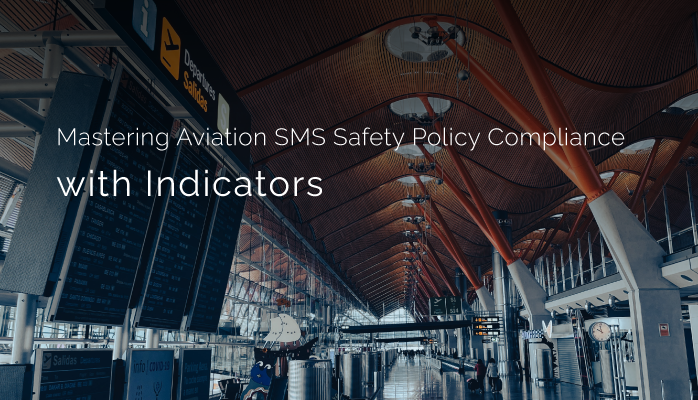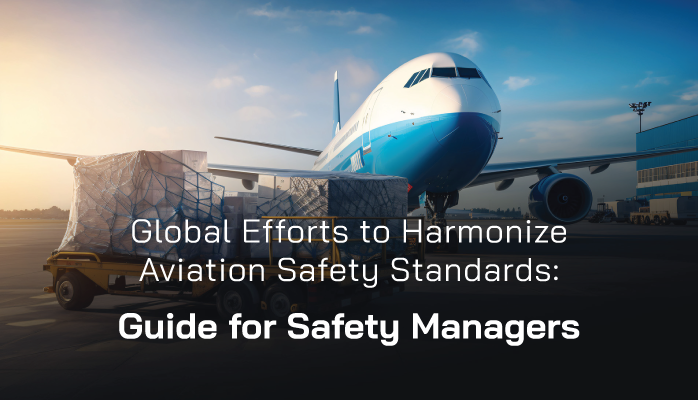Three Stages of Aviation SMS Compliance
There are three levels in the hierarchy of aviation SMS compliance, each with varying degrees of safety performance. Arriving at even the first marker of compliance can take years.
Aviation SMS safety policy will be the first area that organizations focus on for achieving compliance in phases I and II in aviation SMS implementation.
The three levels in the hierarchy of aviation SMS compliance hierarchy are the compliance elements:
Read More
Topics:
1-Safety Policy
Global Efforts to Harmonize Aviation Safety Standards
In the fast-evolving aviation industry, ensuring consistent safety standards across borders is critical. As aviation safety managers, you play a pivotal role in navigating the complexities of global regulations and fostering a culture of safety.
This article explores the ongoing global efforts to harmonize aviation safety standards, their implications, and actionable insights to enhance compliance and safety in your organization. This guide aims to inform and empower you to align with international best practices.
Read More
Topics:
1-Safety Policy
For new aviation safety managers, preparing for Safety Management System (SMS) audits is a formidable challenge, especially when it involves coaching accountable executives and training staff on SMS concepts.
With limited experience, knowing where to start can feel overwhelming. At the heart of effective SMS implementation lies a clear understanding of ICAO Annex 19, the International Civil Aviation Organization’s cornerstone document for safety management. This global standard provides the framework for SMS, guiding organizations worldwide to enhance safety and meet regulatory expectations.
Read More
Topics:
Aviation SMS Implementation,
4-Safety Promotion,
3-Safety Assurance,
1-Safety Policy,
2-Safety Risk Management,
Risk Management Training
For new aviation safety managers, preparing for Safety Management System (SMS) audits can feel overwhelming, especially when it comes to coaching accountable executives. These senior leaders, often focused on operational and financial priorities, may not be familiar with the intricacies of SMS or their critical role in ensuring compliance. Yet, their understanding of regulatory frameworks like ICAO Annex 19, FAA SMS guidelines, and EASA SMS requirements is essential for fostering a robust safety culture and passing audits.
Read More
Topics:
4-Safety Promotion,
3-Safety Assurance,
1-Safety Policy,
Risk Management Training,
FAA Compliance,
Safety Culture
For new aviation safety managers, preparing for a Safety Management System (SMS) audit can feel like navigating uncharted skies. A critical challenge is ensuring that accountable executives—senior leaders like CEOs, directors, or operations managers—understand and fulfill their SMS responsibilities.
These executives are pivotal in demonstrating compliance to regulators like the FAA, EASA, or ICAO, yet many lack the time or technical background to dive into the aviation SMS details.
Read More
Topics:
Aviation SMS Implementation,
4-Safety Promotion,
3-Safety Assurance,
1-Safety Policy,
2-Safety Risk Management,
FAA Compliance,
Safety Culture
A robust Safety Management System (SMS) is the backbone of any organization striving to maintain operational excellence and protect lives.
For aviation safety managers and accountable executives, understanding the four pillars of SMS—Safety Policy, Safety Risk Management, Safety Assurance, and Safety Promotion—is critical to fostering a proactive safety culture and ensuring compliance with global standards like those set by the International Civil Aviation Organization (ICAO).
Read More
Topics:
4-Safety Promotion,
3-Safety Assurance,
1-Safety Policy,
2-Safety Risk Management
Setting Aviation Safety Goals for Compliance
Setting safety goals and objectives in an aviation Safety Management System (SMS) manual, as outlined in TOC 1.6, is essential for driving continuous improvement and ensuring compliance with International Civil Aviation Organization (ICAO), Federal Aviation Administration (FAA), and European Union Aviation Safety Agency (EASA) standards.
These goals guide organizations in measuring safety performance, reducing risks, and fostering a proactive safety culture.
Read More
Topics:
Aviation SMS Implementation,
4-Safety Promotion,
1-Safety Policy,
Risk Management Training
In the fast-paced world of aviation, ensuring safety is paramount. The aviation Safety Management System (SMS) has emerged as a critical tool for managing safety risks systematically, helping organizations proactively identify hazards and mitigate risks.
Three key regulatory bodies—the International Civil Aviation Organization (ICAO), the Federal Aviation Administration (FAA), and the European Union Aviation Safety Agency (EASA)—each provide SMS standards that guide aviation safety practices. While these standards share a common goal of enhancing safety, they differ in their approach, applicability, and specific requirements.
Read More
Topics:
4-Safety Promotion,
3-Safety Assurance,
1-Safety Policy,
2-Safety Risk Management,
FAA Compliance
Creating Aviation SMS Communication Plans
An effective communication plan is a vital component of an aviation Safety Management System (SMS) manual, as outlined in TOC 1.5. It ensures that safety information, including hazard reports and safety policies,
Read More
Topics:
Aviation SMS Implementation,
4-Safety Promotion,
1-Safety Policy
Defining SMS Roles in Aviation SMS Manuals
Defining roles and responsibilities in an aviation Safety Management System (SMS) manual is critical for ensuring accountability and compliance with International Civil Aviation Organization (ICAO), Federal Aviation Administration (FAA), and European Union Aviation Safety Agency (EASA) standards.
Outlined in TOC 1.4 of the SMS manual, clear role assignments empower safety managers, accountable executives, and frontline staff to execute safety processes effectively. Whether for small flight schools or global airlines, this step reduces compliance risks by 80%, as demonstrated by client outcomes.
Read More
Topics:
Aviation SMS Implementation,
1-Safety Policy













